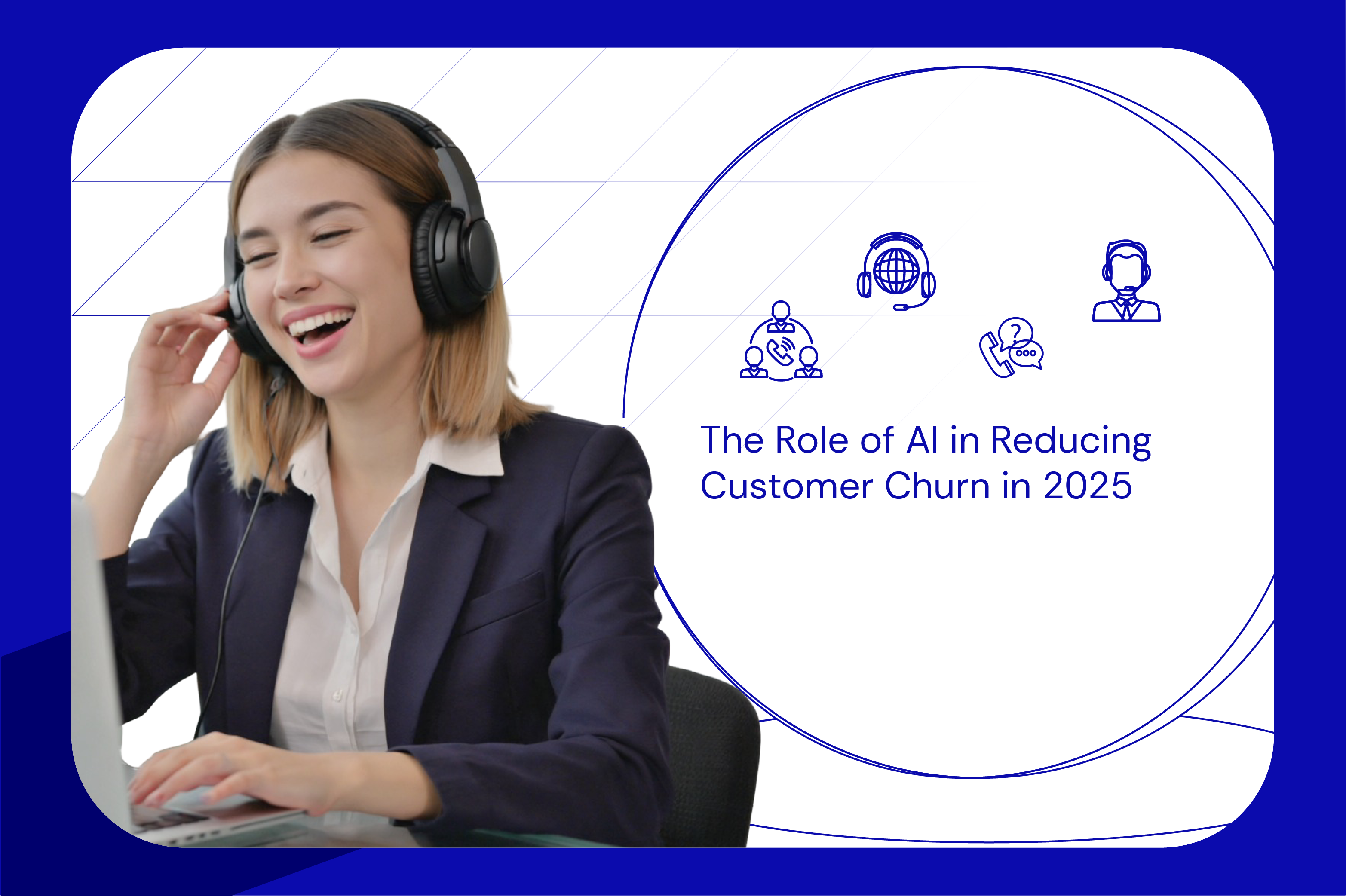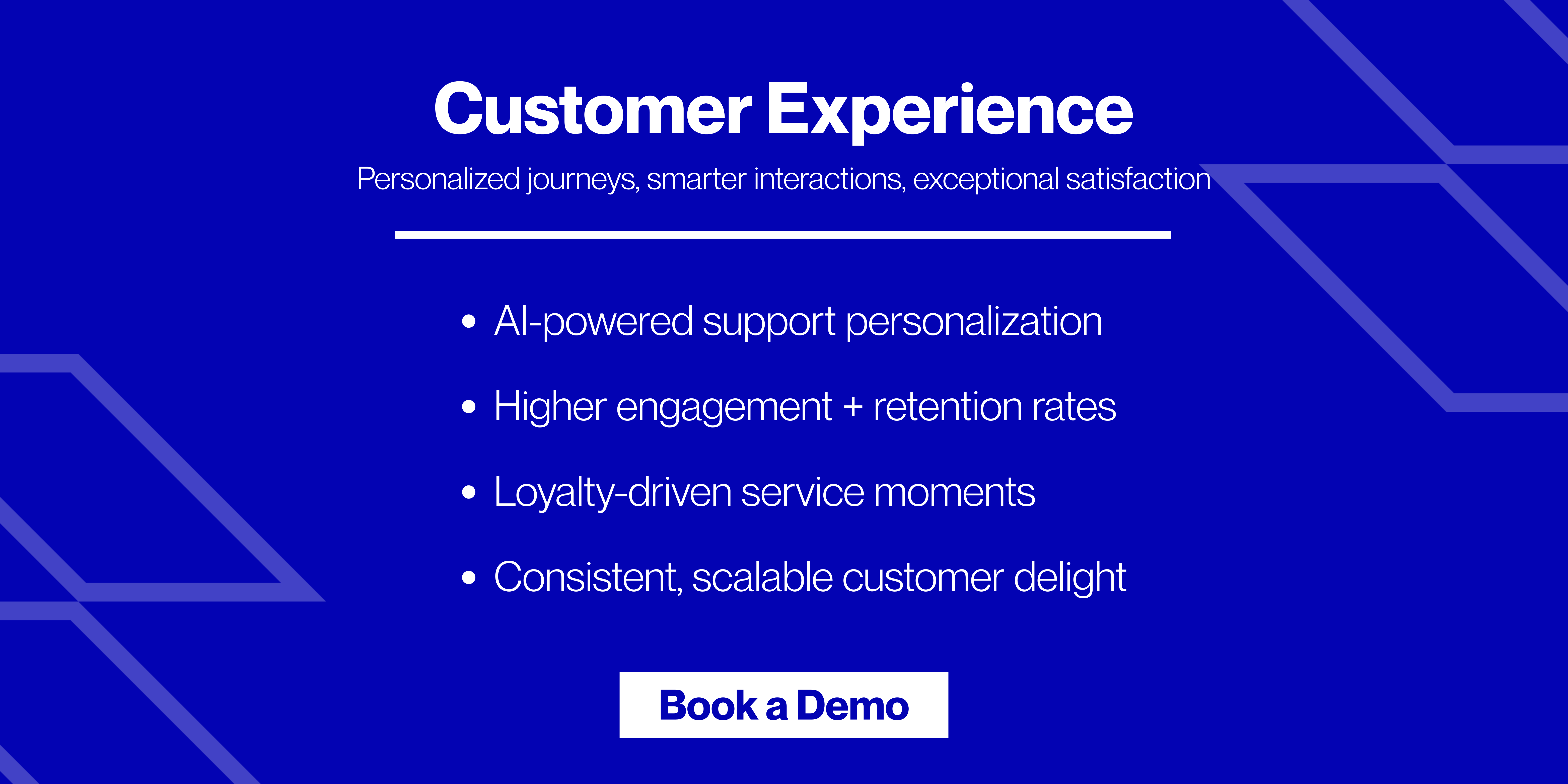AI for customer retention refers to the usage of artificial intelligence to study customer behavior. Through this analysis, AI models try to spot “churn risks” and calculate a “churn score”. They also give early warning signals to businesses so that they can act timely.
Do you still think offering a good product = low customer churn? In today’s market, customers have endless choices! And switching takes just a click. In 2025, you cannot rely solely on good product quality. Instead, you must also focus on several other factors, such as:
- Customer sentiment (through reviews, support chats, and social media feedback)
- Engagement levels (how often customers use your product or service)
- Pricing sensitivity (competition, discount offers, and special deals)
- Customer journey drop-offs (stages where buyers disengage or abandon)
Now, how do you track all these factors? Hiring is expensive, and that’s where AI makes its entry! Nowadays, several D2C companies and consumer brands earning $5M+ revenue use AI for customer retention.
These models track customer data and give you early warning signals. They also calculate churn risk scores in real time. This information gives you a chance to engage with vulnerable customers before they leave.
So, want to learn how AI retention works? In this article, you will first learn what customer churn is and why you must reduce it. Next, you will check out 7 different ways in which AI models can help you!
What is Customer Churn?
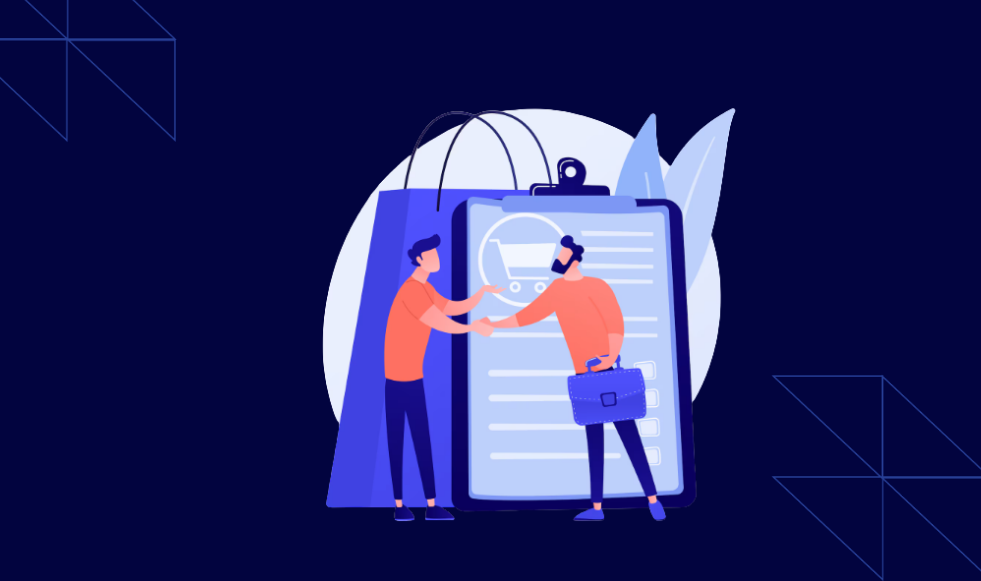
Customer churn means losing customers over time. For example, if people stop buying from you, cancel your service, or stop visiting your store, that’s churn. Most D2C companies and consumer brands actively track churn using a specific metric called the “churn rate”. This rate shows the percentage of customers who leave within a set period, like a month or a year.
If the churn rate of your business is increasing, it is a warning sign! It shows that customers are not happy with your product, service, or customer support. In 2025, several companies are using AI for retention, which helps them reduce churn in various ways (explained later).
Why is Reducing Churn Important?
A recent study found that attracting new customers is 5X more expensive than retaining existing customers. Why? That’s because new customer acquisition usually requires you to spend in multiple areas, such as:
- Marketing
- Sales
- Promotions
On the other hand, customers who stay with you not only buy more (gradually) but also recommend your business to others. Please realize that if your churn is high, your revenue becomes unstable. Whereas, by reducing churn, you can:
- Build a stronger customer base
- Increase repeat sales
- Create a steady business income
Thus, lowering churn is one of the best ways to grow without constantly spending to replace lost customers.
Can You Use AI for Retention?
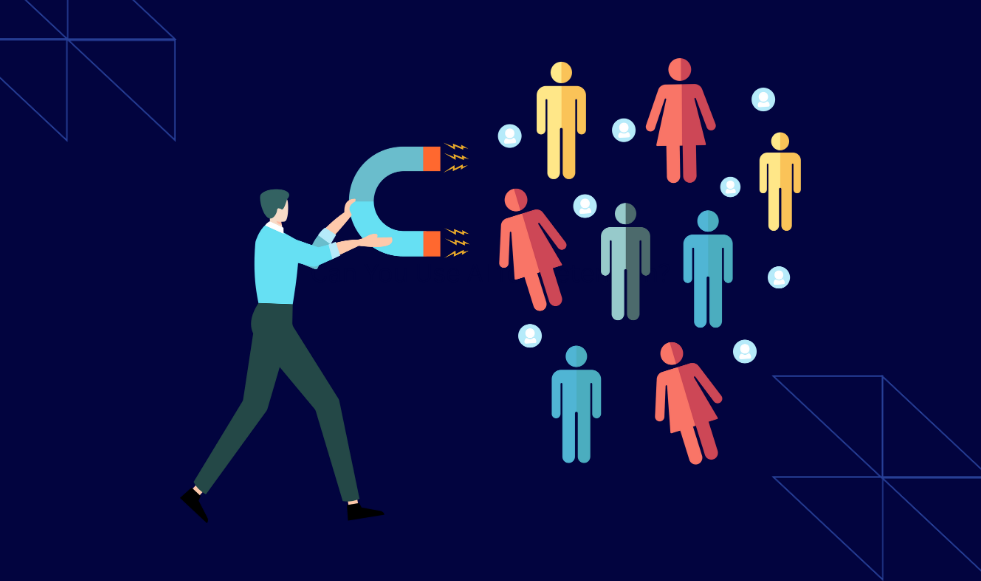
Yes, and many D2C companies are even doing so! Studies show that churn detection systems based on the latest artificial intelligence technologies can reduce churn rates by up to 20% in many industries, particularly telecom, banking, and e-commerce.
When you use AI for customer retention, these models study customer behavior, such as:
- How often do your customers use your product?
- How do they interact with support?
- Whether they pay on time?
Based on this analysis, they try to spot signs that someone might leave soon. Next, the AI model gives each customer a “churn risk score”. This score represents the chance they may stop buying. Now, based on this score, your team can reach out to vulnerable customers (with a high score).
7 Ways AI Can Reduce Customer Churn in 2025!
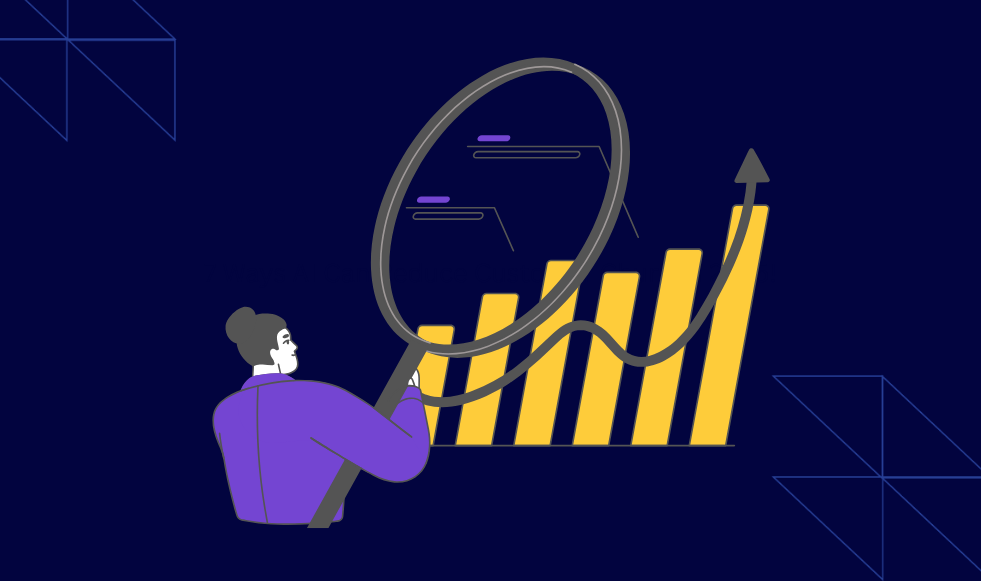
CX optimization via AI allows companies to keep customers longer. Such customers spend more + stay loyal. Now, as a result, two things improve:
| Benefit I: Increased Net Revenue Retention (NRR) | Benefit II: Higher Customer Lifetime Value (CLV) |
|
|
Together, these boost your profits. Also, your dependence on new customer acquisition significantly decreases. But how does AI for customer retention work? Below are seven different ways AI retention models can help you:
1. Predicting Churn Analytics
AI looks at past data. It studies your past customer records, such as:
- Who stopped buying
- When they left
- What their habits were before leaving
By analyzing this data, the AI model spots warning signs that often come before churn. To make a precise analysis, it builds prediction models using techniques like:
- Decision trees (step-by-step choices)
or
- Logistic regression (probability-based methods)
Both allow the AI models to accurately predict churn analytics. Furthermore, AI models keep on improving themselves as new customer behavior data comes in.
2. Grouping Customers for Personalized Care
AI performs customer segmentation, where it groups your customers into categories based on behavior, such as:
- Frequent buyers
- Occasional buyers
- Those who haven’t purchased in a while.
Now, instead of sending the same message to everyone, AI suggests the right product or offer for each customer group. For example, a discount for inactive customers or upgrades for loyal ones.
Furthermore, AI predicts what customers might do next, such as reducing orders or leaving. Now, this allows you to reach them in advance with targeted actions to keep them engaged. Studies show that such automation of customer segmentation and outreach increases retention for high-risk groups and lowers the cost of human labor by up to 60%!
3. Spotting Unhappy Customers Early
Most AI models read through:
- Customer reviews
- Emails
- Chats
- Social media posts
By reading them, they try to detect positive or negative feelings (this is called sentiment analysis). Now, if someone sounds upset (maybe in a support chat or review), AI flags it right away so you can respond before they switch to your competitors.
Such sentiment tracking is an ongoing effort and gives you a live picture of overall customer happiness. Most D2C companies and consumer brands earning $5M+ revenue try to adjust their service based on this knowledge before dissatisfaction grows.
4. AI Gives You the Best Price to Charge
When you use AI for customer retention, these models deeply study:
- Customer habits
- Competitor prices
- Market demand
Next, they suggest the right price at the right time. This allows your business to stay competitive without over- or undercharging.
Additionally, these AI models also predict revenue impact. They forecast how a price change (like a discount or spike) might affect sales and whether customers will stay or leave in response.
5. Mapping the Customer’s Path Before They Leave!
Advanced AI retention models are loaded with journey mapping algorithms. Such systems track the customer journey from first contact to repeat purchases. They highlight specific areas where the customers mostly drop off.
By finding these “intervention points”, such AI models spot stages where customers often lose interest, such as:
- During checkout
- After their first purchase
- On the contact form, and more
Now, based on this analysis, the AI model tries to adjust the experience for each customer. For example, it might send reminders after cart abandonment or special offers after a long gap in purchases.
6. Measuring Customer Health with AI
Nowadays, AI models create a “health score” for each customer. This score is calculated after carefully studying:
- Usage patterns
- Support history
- Feedback
A strong score means the customer is engaged, while a weak score signals risk. Now, this again gives you early warning signals. For example, AI alerts you early if a customer:
- Stops using your product
- Raises more support tickets
- Shares negative feedback
Additionally, since customer habits keep changing, the AI model regularly updates its scoring models. This allows it to stay aligned with current expectations and behaviors.
7. Do Better Subscription Management
For subscription-based businesses, AI can make “renewal predictions”. These models try to predict which customers are likely to renew and which may not. This assessment is usually based on their activity and engagement.
Now, instead of sending the same renewal deal to everyone, AI personalizes the incentives. For example, a loyal customer might get a thank-you bonus, while an inactive one might get a discount to re-engage.
Moreover, AI prepares a list of customers who are at risk of canceling before renewal. This again allows you to act early with offers or service improvements to retain them.
AI Too Tough? Achieve 100% CX Optimization with Atidiv in 2025!
AI can stop churn! Yes, in 2025, 83% of companies report that they use AI models to develop customer retention strategies. But why such a craze? That’s because AI studies data from many sources, such as:
- Customer usage
- Support interactions
- Payment history
Next, based on this analysis, it gives you early warning signals and real-time churn risk scores. Also, these models stay updated with changing customer behaviors and market trends. This allows them to keep predictions accurate all year.
Do you feel AI models are too complex? Don’t have experienced staff to handle AI and its predictions? Avoid the headache by outsourcing your customer support to Atidiv.
With 15+ years of experience and a 4.8 CSAT rating, we can handle your entire customer support department. Our expert team offers multiple services, such as:
- AI voice support
- Email answering service
- Inbound and outbound call center services
- Social media support
- Digital customer experience solutions
Our past clients have achieved cost savings up to 60% compared to running in-house teams. Want to save costs + give the best experience to your customers? Schedule a call now to learn how we can help you!
AI for Customer Retention FAQs
1. How does AI reduce customer churn?
AI studies multiple customer patterns, such as:
- Purchase history
- Support requests
- Payment behavior
By analysing these patterns, the AI models can spot early warning signs of churn. It then alerts your customer support team so that they can immediately act with offers, service improvements, or follow-ups. This reduces customer loss and keeps your revenue steady.
2. Why is reducing churn more valuable than just finding new customers?
Several studies show that winning new customers usually costs more in marketing and sales. This cost can be as high as 5X than that of retaining existing customers.
Whereas, keeping existing customers builds loyalty + lets you earn from repeat purchases. Also, satisfied customers associated with the company for a long time turn into “brand evangelists”. They recommend your products and services to their relatives and friends.
3. What are the biggest challenges with using AI for customer retention in 2025?
In 2025, most businesses (83%) say AI is central to retention! But challenges remain, such as:
- Choosing the right AI models that are compatible with your existing systems, such as CRM.
- Handling large amounts of data and fetching valuable information from them is tough.
- Sometimes, AI models offer complex insights that are not easy to comprehend.
To resolve such challenges, you usually need to hire experienced professionals. If your business is struggling with limited resources, such hirings can add further financial burden. In such cases, the best solution is to outsource to leading customer experience solutions providers, like Atidiv.
4. How can I act quickly when AI flags a “churn risk”?
When AI shows that a customer might leave, you need to engage with them immediately. This could mean:
- Offering a discount
- Solving a service issue
- Sending a personalized message
Your ultimate goal? You must show your customers you care and give them a reason to stay!
5. How can I use AI to build strong customer loyalty strategies?
By using AI models, you can personalize the customer experience. It can suggest to you:
- Best offers as per your customer’s needs
- Recommend products that customers are most likely to buy
- Track satisfaction through feedback analysis
Moreover, AI models also spot when customers disengage and prompt timely re-engagement. Now, based on this information, you can develop strong customer loyalty strategies and even encourage your customers to make repeat purchases.
